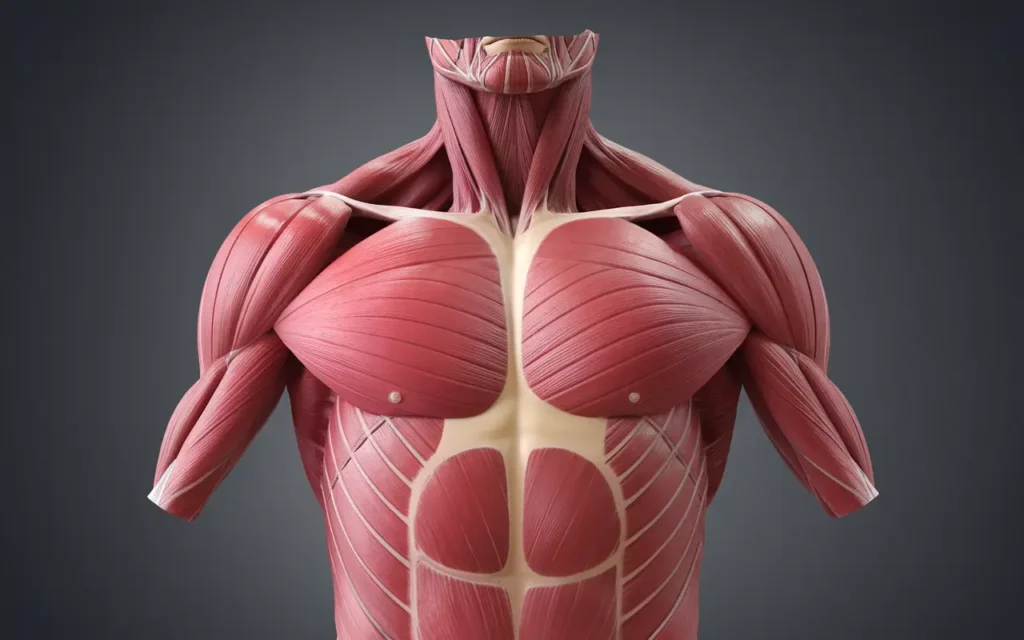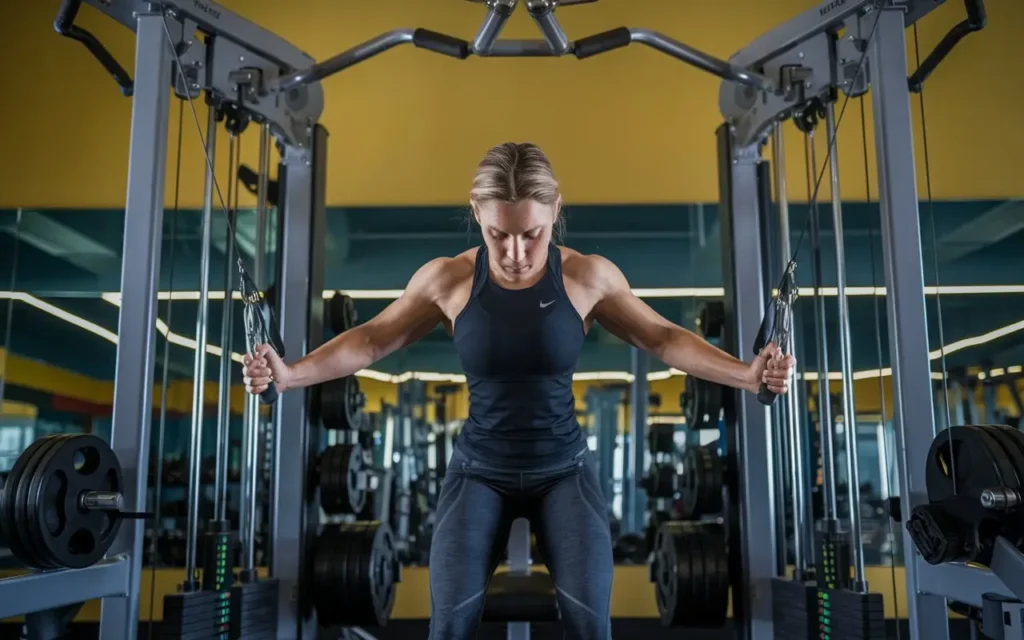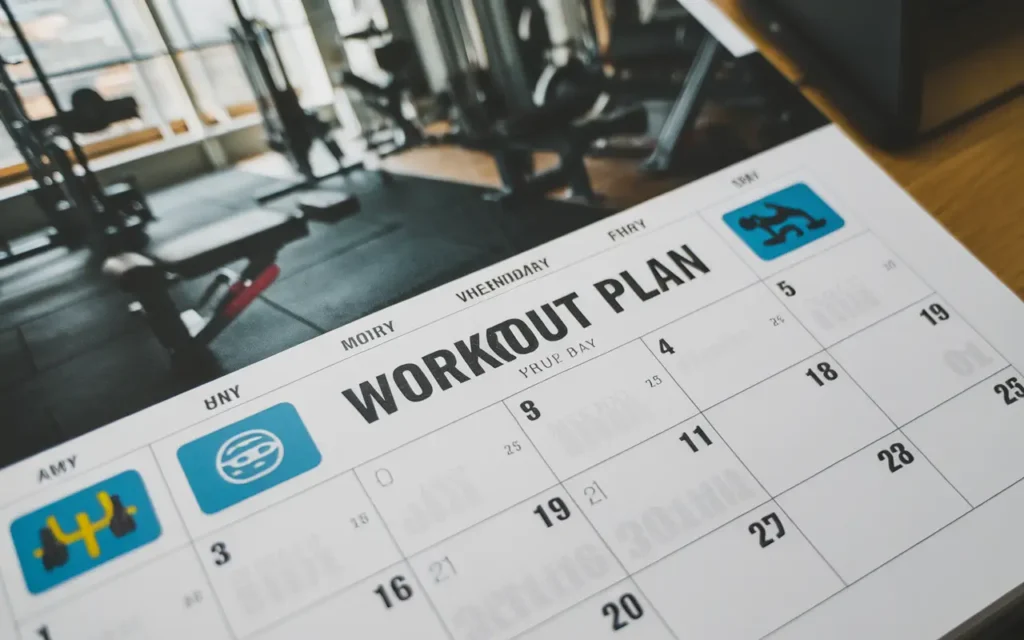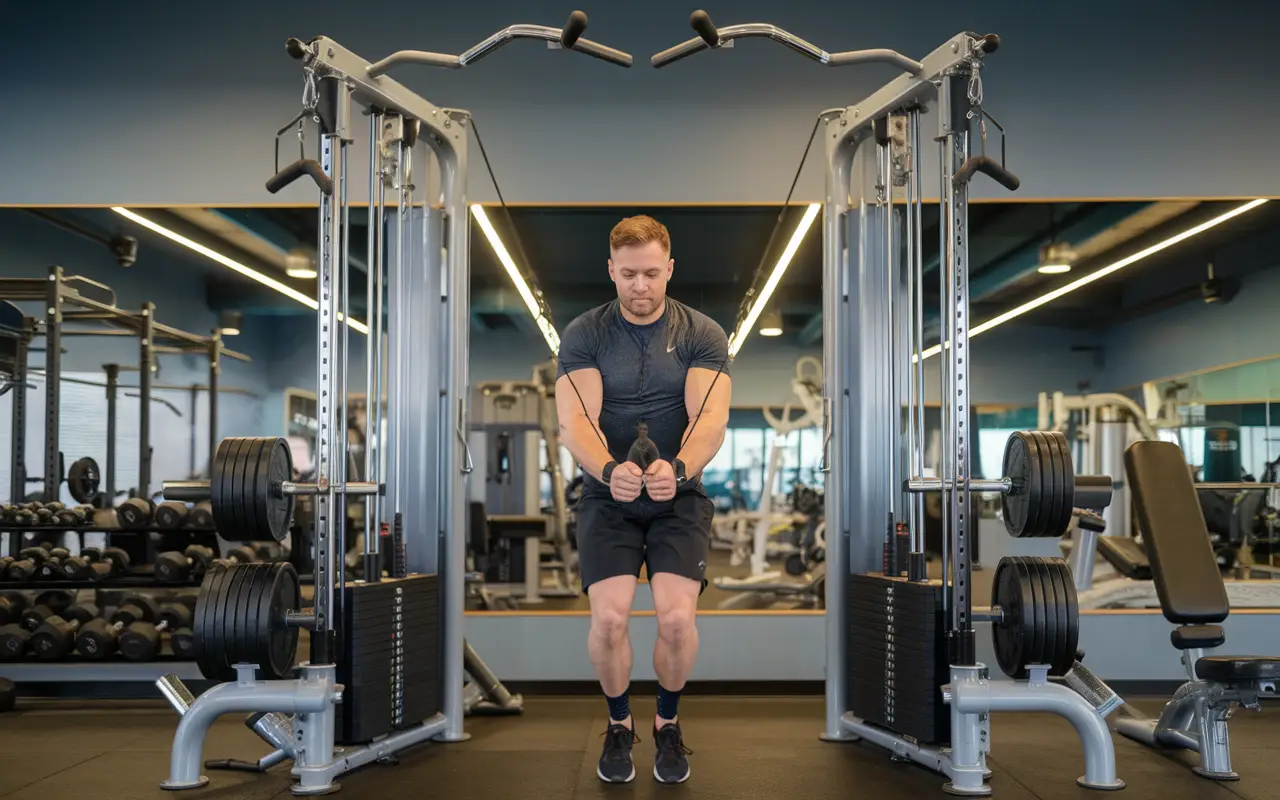Are you struggling to achieve that full, sculpted chest you’ve worked so hard for? Perhaps your traditional bench press routine has hit a plateau; consequently, you’re searching for a safer, more effective way to target your chest muscles. Enter the world of cable chest workouts—a versatile and impactful addition to any fitness regimen. With controlled movements and consistent tension, cables can help you isolate and build your chest muscles like never before.
Cable chest workouts aren’t just for advanced gym-goers—they offer something for everyone, from beginners looking to learn proper form to seasoned lifters aiming for peak performance. In this article, we’ll dive into the benefits of cable exercises; furthermore, we will explore the best chest movements you can perform and provide tips to maximize your gains.
Benefits of Cable Chest Workouts

Versatility and Effectiveness
Cables are the epitome of versatility. By adjusting the height, angles, and attachments, you can customize your workout to your exact needs. Whether you’re targeting the upper chest, lower chest, or specific fibers of the pectoral muscles, cables give you the power to design a workout that suits your goals and preferences.
Isolated Muscle Activation
Cable machines offer a significant advantage over traditional free weights; in fact, they keep a steady pressure on the muscles all the way through the full range of motion. This feature enhances muscle engagement and can lead to more effective strength training outcomes. The effectiveness of cable workouts can motivate you to test your limits and achieve your fitness goals.
Reduced Risk of Injury
Cables offer a significant safety advantage by controlling precise movement, which minimizes strain on your joints and ligaments. This is particularly useful for people recovering from injuries or those who want to avoid the common pitfalls of free-weight lifting, providing a sense of safety and confidence in your training.
you can follow the steps outlined in this article to prevent injury.
Anatomy of the Chest Muscles

Known as the pectorals, the chest muscles are crucial in upper body movement and overall strength. Understanding their anatomy, particularly the pectoralis major and the minor, is essential for fitness enthusiasts and healthcare professionals.
Understanding the Pectorals
The chest comprises two primary muscles: the pectoralis major and minor. The pectoralis major is the bigger, fan-shaped muscle responsible for the chest’s size and strength. In contrast, the smaller pectoralis minor aids in stabilizing shoulder movements.
How Cables Work the Chest Differently
Traditional weights rely on gravity, which can sometimes limit the angle and effectiveness of your movements. On the other hand, the cables provide constant tension, making them a superior choice for targeting the chest from various angles.
Getting Started with Cable Workouts
Essential Equipment
You need only a cable machine with adjustable pulleys and a few attachments, such as single-grip handles, ropes, or straight bars. Most commercial gyms are equipped with these versatile machines.
How to Set Up the Cable Machine
Begin by adjusting the pulleys to the appropriate height corresponding to the specific exercise you plan to perform. Next, take a moment to assess your body position in relation to the pulleys to ensure optimal alignment. For your first few sets, it is advisable to select a light-to-moderate weight that not only allows you to concentrate on maintaining proper form but also helps you control the movement throughout. Doing this will build a solid foundation and keep you safe from injuries as you become more familiar with the exercise.
Safety Tips for Beginners
Here are a few tips for safe training with cables :
- Always check the weight stack and pin placement before starting.
- Warm up well to prep your muscles and prevent injuries.
- Focus on controlled, deliberate movements rather than rushing through the exercises.
Best Cable Chest Exercises

Cable Chest Fly
The cable chest fly is an excellent exercise for isolating your chest muscles. It provides constant tension throughout the movement, resulting in a great stretch and contraction—perfect for sculpting and defining your pectorals!
How to Perform:
- Set the cables to shoulder height and grab the handles with both hands.
- Stand in the machine’s center, one foot slightly forward for stability.
- Keep a slight bend in your elbows, and extend your arms to the sides in a wide arc.
- Slowly bring the handles together before you, squeezing your chest at the top of the movement.
- Control the movement as you return to the starting position.
Pro Tip:
To maximize the contraction, pause for a second when the handles meet and focus on squeezing your chest muscles. Maintain your movements sluggish and controlled to avoid using momentum.
Low-to-High Cable Fly
The low-to-high cable fly is a fantastic exercise for targeting the upper chest and adding definition to your upper pecs. It also engages your shoulders for a well-rounded upper-body workout.
How to Perform:
- Set the cable pulleys to the lowest position and grab the handles.
- Stand in the center of the machine with a staggered stance for balance.
- Begin with your arms down and slightly bent, gripping the handles at hip height.
- In a controlled motion, bring the handles upward in an arc until they meet at chest height or slightly above.
- Squeeze your upper chest at the movement’s top, then slowly return to the starting position.
Pro Tip:
Keep your arms in a slight “hugging” position throughout the movement to maximize the stretch and contraction. Additionally, avoid raising the handles too high to maintain focus on the upper chest.
High-to-Low Cable Fly
The high-to-low cable fly is a decisive move for sculpting the lower portion of your chest. It helps create a fuller, more defined look while also engaging your core for stability.
How to Perform:
- Set the cable pulleys to the highest position and grab the handles.
- Stand in the machine’s center staggered, leaning slightly forward at the hips.
- Stretch your arms to the flanks at shoulder height, allowing for a gentle bend in your elbows.
- Pull the handles downward in a wide arc, bringing them together in front of your thighs.
- Squeeze your chest tightly when you reach the bottom of the movement. Then, slowly go back to the starting position.
Pro Tip:
To maintain constant tension on your chest, keep your arms in a slight arc and avoid locking out your elbows. Additionally, focus on a smooth, controlled motion for better muscle activation.
Incline Cable Fly
The incline cable fly targets the upper portion of your chest, giving your pecs a fuller, more balanced look. It’s a great addition to any chest workout for a well-rounded physique!
How to Perform:
- Adjust the cable pulleys to a low position and grab the handles.
- Position an adjustable bench at a 30-45-degree incline between the cables. Sit down with your feet flat on the ground.
- Lie back and bring the handles to chest level, palms facing each other, and arms slightly bent.
- Open your arms in a wide arc, lowering them until you feel a deep stretch in your chest.
- Slowly bring the handles back together at the top, squeezing your upper chest.
Pro Tip:
To maintain constant tension on your chest, avoid locking out your elbows or overextending your arms; consequently, focus on a controlled motion for improved muscle activation and growth!
Cable Crossover
This exercise requires you to cross your arms in front of your chest, which makes it ideal for activating the entire chest. The cable crossover is, in fact, a classic chest-shaping exercise that specifically targets the inner and lower pecs. Thus, it’s perfect for achieving that well-defined chest with a strong centerline!
How to Perform:
- Set the cable pulleys to a high position above shoulder level and grab the handles.
- Stand in the machine’s center with one foot slightly forward for balance.
- Extend your arms with slightly bent elbows and a lifted chest to the sides.
- Pull the handles downward and forward in an arc until your hands meet in front of your chest.
- Squeeze your chest at the end of the movement, then slowly return to the starting position.
Pro Tip:
Cross your hands slightly at the bottom of the movement for optimal muscle activation, and alternate which hand is on top of each rep. Keep the motion slow and controlled to engage your chest fully!
Single-Arm Cable Fly
The single-arm cable fly isolates each side of your chest, helping to correct muscle imbalances and improve symmetry. It’s an excellent move for fine-tuning chest development!
How to Perform:
- Set the cable pulley to shoulder height and grab the handle with one hand.
- Stand sideways to the machine, with the working arm holding the handle and the other hand resting on your hip or chest for balance.
- Bend your elbow slightly and pull the handle across your body in an arc. Keep your chest engaged.
- Squeeze your chest at the end of the movement, then slowly return to the starting position.
- Complete all reps on one side before switching to the other.
Pro Tip:
Stand slightly staggered for better stability, and focus on keeping your torso steady to avoid using momentum. Visualize your chest doing the work for maximum muscle engagement!
Advanced Techniques
Progressive Overload with Cables
Gradually raise the weight you are lifting to promote steady strength improvements. Even as you increase the resistance, it’s essential to maintain impeccable form throughout your exercises. This will help prevent injuries, optimize your performance, and ensure that you effectively target the right muscle groups. Prioritizing technique over sheer weight will lead to sustainable gains in strength and overall fitness.
Supersets and Drop Sets with Cable Machines
When training with cable machines, consider incorporating supersets and drop sets into your routine for maximum muscle fatigue and growth. Supersets involve performing two back-to-back exercises with little to no rest in between. For example, you can combine cable chest exercises, such as cable flyes or cable chest presses, with another movement targeting a different muscle group, like tricep pushdowns. This approach not only saves time but also increases the intensity of your workout. On the other hand, drop sets are a fantastic way to exhaust your muscles fully. After completing a set with a challenging weight, diminish the weight and resume the exercise until you reach failure. This technique can be particularly effective with cable machines, as you can easily adjust the weight quickly.
Common Mistakes to Avoid
- Using excessive weight and sacrificing form.
- Forgetting to complete a full range of motion.
- Neglecting warm-ups or cool-downs.
Sample Weekly Chest Workout Plan

Here’s an example of how to incorporate cable exercises into a balanced weekly chest routine:
| Day | Exercise | Sets x Reps |
| Monday | Bench Press | 4 x 8-10 |
| Incline Dumbbell Press | 4 x 8-12 | |
| Cable Crossover | 4 x 10-12 | |
| Wednesday | Cable Chest Fly | 4 x 12-15 |
| Decline Cable Fly | 4 x 10-12 | |
| Push-Ups (Burnout) | 2 x Max | |
| Friday | Incline Cable Fly | 4 x 12-15 |
| Single-arm cable Fly | 3 x 15 on each side | |
| Dips | 4 x Max |
This routine ensures you hit your chest from multiple angles and with varied resistance, optimizing muscle growth and strength.
If you’re having trouble getting started with your workout routine, follow the advices in this article.
FAQs
For optimal results, incorporate cable chest exercises 1-2 times per week as part of your overall chest or upper-body routine. Allow at least 48 hours of recovery between intense chest sessions.
Both tools have unique benefits. Cables provide constant tension and greater control, making them excellent for isolation exercises. Dumbbells, however, are better for heavy lifting and building foundational strength. Combining both is ideal for a balanced chest routine.
Absolutely! Cable machines are beginner-friendly as they guide your movements and reduce the risk of injury. Begin with soft weights and concentrate on proper form before progressing to heavier resistance.
The cable crossover is a top choice for overall chest development. It effectively targets the upper and lower chest muscles while providing a deep stretch and contraction.
To hit the upper chest, perform incline cable flies. Set the pulleys low and sweep your arms upward in a controlled motion, mimicking the movement of an incline dumbbell fly.
Cables allow for more freedom of movement compared to traditional machines, which often follow fixed paths. This enables a more natural range of motion, better muscle activation, and the ability to target muscles from multiple angles.
Conclusion
Cable chest workouts are a versatile, effective, and safe way to build a more muscular, sculpted chest. Cables offer unmatched benefits if you’re a beginner looking to learn proper form or an advanced lifter wanting to break through plateaus. Using a variety of cable exercises in your workout will help you strengthen your chest muscles from all directions. Also, this approach promotes balanced growth and lowers the risk of injury.
Now it’s time to take your chest training to the next level— so, try these cable exercises and watch your gains soar!

